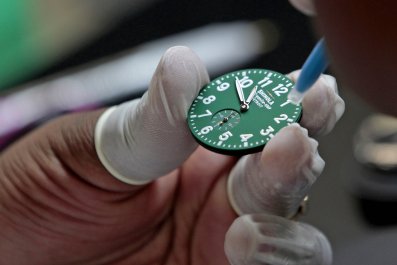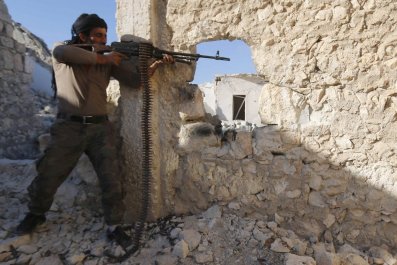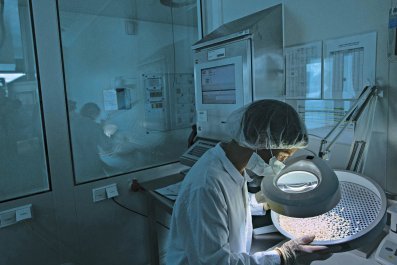Four years into a five-year project to develop a rapid hemorrhagic virus detection technology, the deadliest outbreak of Ebola hemorrhagic fever in history struck. For the Boston University research team working on the SP-IRIS device (single particle interferometric reflectance imaging sensor), it's a small matter of bad timing. "Having an outbreak happening right now, clearly we're not ready," says Selim Ünlü, professor of biomedical and computer engineering at the school. "Most of the technologies are not ready, there are no easy quick solutions to diagnose this epidemic."
IRIS is a small, shoebox-shaped device that is remarkably simple to use. You take a blood sample of 100 microliters (about the size of a couple of water droplets) and place it on a diagnostic computer chip for between 30 and 60 minutes. Then a visible LED is shone on the chip, illuminating the surface of the blood sample and allowing difficult-to-see viral nanoparticles to "pop up." This enables researchers to see particles that are usually visible only under pricey and bulky electron microscopes, making it simple to diagnose the presence of a virus.
The device has distinct advantages over the current method to diagnose Ebola in West Africa, a polymerase chain reaction, which takes four hours when testing a sample—plus additional time to deliver them—and can cost up to $150 per test. When IRIS development has been completed, each test should take about an hour and cost only a couple of dollars. In a single day, dozens to hundreds of tests could be read.
"There's more to consider than just the raw time. There is also something to consider in terms of how complex [the current diagnosis] is," says John Connor, professor of microbiology at Boston University. "Making it easier is one of the critical aspects."
Ebola continues to ravage West Africa—13,042 cases and 4,818 deaths from this outbreak as of November 5—and, unfortunately, at the current rate of research IRIS probably will not be ready for field use until mid-2016. But even if the current Ebola outbreak is over by then, IRIS will still be of huge value: The device will also be able to detect Lassa fever and Marburg, two other hemorrhagic viruses found in parts of Africa for which diagnostics are under-resourced.
"If you look upon someone and they look sick, if you can tell quickly and easily what they're infected with, you can quickly start treatment," says Connor. Earlier detection of Ebola (and other viral diseases) means quicker, more effective treatment and a better outcome for patients.
"It's an absolutely critical component of addressing the disease," Connor says of the device.



























